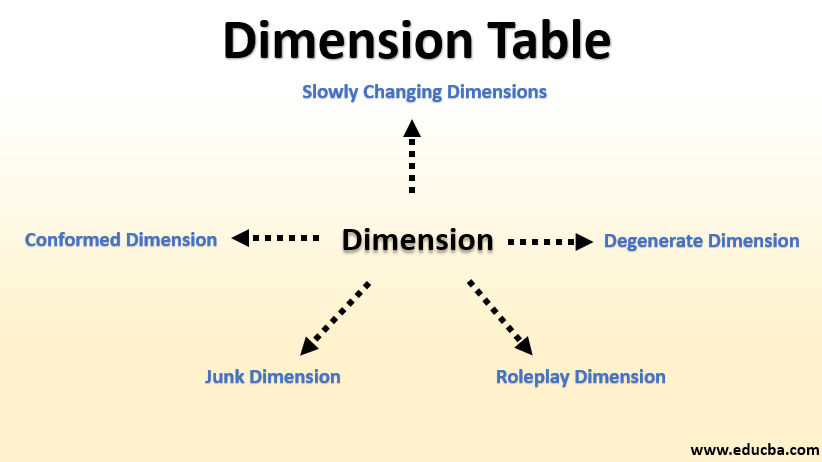Characteristics of Dimension Table

Dimension tables are an integral part of dimensional modeling in data warehousing. They store descriptive attributes that provide context to the quantitative data stored in the fact table. Here are the key characteristics of dimension tables:
-
Descriptive Attributes:
- Dimension tables contain descriptive attributes that describe the dimensions or aspects of a business process. These attributes provide context and categorization for the quantitative data stored in the fact table. Examples of descriptive attributes include product name, customer demographics, geographic location, time periods, etc.
-
Categorical Data:
- Dimension tables primarily store categorical or textual data. These data represent the different values or categories within each dimension. For example, a time dimension table may include attributes such as year, month, day, and quarter.
-
Hierarchical Structure:
- Dimension tables often have a hierarchical structure, with attributes organized into levels of detail. For instance, a time dimension might have levels such as year, quarter, month, week, and day, allowing for flexible analysis at different levels of granularity.
-
Surrogate Keys:
- Dimension tables typically include surrogate keys, which are artificial keys generated to uniquely identify each row in the table. Surrogate keys are used instead of natural keys for efficiency and consistency in data warehousing environments.
-
Foreign Keys:
- Dimension tables contain foreign keys that establish relationships with the fact table. These foreign keys reference the primary keys in the fact table and facilitate multidimensional analysis by linking quantitative facts with descriptive attributes.
-
Denormalized Structure:
- Dimension tables are often denormalized to optimize query performance and simplify analytical processing. This may involve including redundant or duplicated data within the dimension table to eliminate the need for joins with other dimension tables.
-
Types of Dimension Tables:
- There are various types of dimension tables based on the nature of the dimensions they represent. Common types include:
- Time Dimension Tables: Store temporal attributes such as dates, months, quarters, and years.
- Product Dimension Tables: Store attributes related to products or services, such as product ID, name, category, and price.
- Customer Dimension Tables: Store attributes related to customers, such as customer ID, name, address, and demographic information.
- Geography Dimension Tables: Store attributes related to geographical locations, such as country, region, city, and postal code.
-
Low Volume:
- Dimension tables typically contain a relatively low volume of data compared to fact tables. They primarily store descriptive attributes, which provide context for analyzing the larger volumes of quantitative data stored in the fact table.
Overall, dimension tables play a critical role in dimensional modeling and data warehousing by providing descriptive context for quantitative data. They enable multidimensional analysis and reporting by linking facts with descriptive attributes through foreign key relationships.
Thank you,
